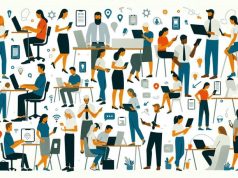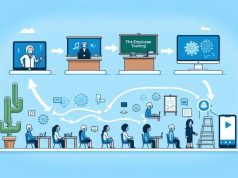In an age marked by rapid technological innovation and dynamic global economic shifts, traditional career pathways are morphing, rendering once-stable skill sets obsolete. Workers are increasingly confronting the reality that to remain competitive and thrive in the labor market, continuous learning and skill development is paramount. This is where ‘upskilling’ – the process of teaching current employees additional, advanced skills – plays a vital role. It stands not merely as a buzzword, but as a critical lifeline for employees and employers alike.
As a Diversity and Inclusion Expert, I recognize the great potential that upskilling has for promoting economic mobility and driving inclusive growth. However, despite its apparent benefits, the journey to fostering a culture of lifelong learning is fraught with challenges. Access to upskilling programs is unevenly distributed, with underrepresented and marginalized communities often at a disadvantage. Financial constraints, limited time due to personal obligations, and a lack of support within the workplace can impede individuals’ ability to engage with learning opportunities.
The creation and implementation of effective upskilling initiatives require thoughtful consideration of diverse employee needs. Companies that have pioneered in this realm exhibit certain commonalities: they provide tailored training programs that account for varied learning styles, they offer flexible scheduling, and they ensure that economic barriers are minimized. For instance, some offer tuition reimbursement or establish partnerships with educational institutions to subsidize costs.
Policy also plays a significant role. Government initiatives can incentivize upskilling through tax breaks, subsidies, or funding for educational programs. Legislation can also encourage or require employers to invest in training for their workers. The interplay between technology, education, and workforce development is intricate but crucial in shaping a workforce equipped for the future.
Examining case studies allows us to glean insights into what makes an upskilling program successful. One example is a tech company that introduced an in-house coding academy, aiming to increase the number of women and minorities in its engineering teams. Not only did this initiative provide its current employees with growth opportunities, but it also contributed to the diversification of the tech industry.
This article, in conclusion, invites readers to consider how upskilling can be a force for reducing inequalities and creating a resilient workforce. It advocates for a societal shift in perspective, where continuing education is not perceived as a luxury or a burden, but rather as an integral component of one’s professional journey. By bridging the skills gap through upskilling, we can foster a labor market that is adaptive, innovative, and inclusive – ready to meet the demands of tomorrow’s job market.
In the spirit of generating discussion and driving action, we welcome you to share your thoughts and experiences on upskilling. How can we collectively work towards a future where every worker has the opportunity to grow and succeed? The conversation begins with acknowledging the gap and committing to ways to bridge it, ensuring that the future of work is one marked by opportunity for all.




























